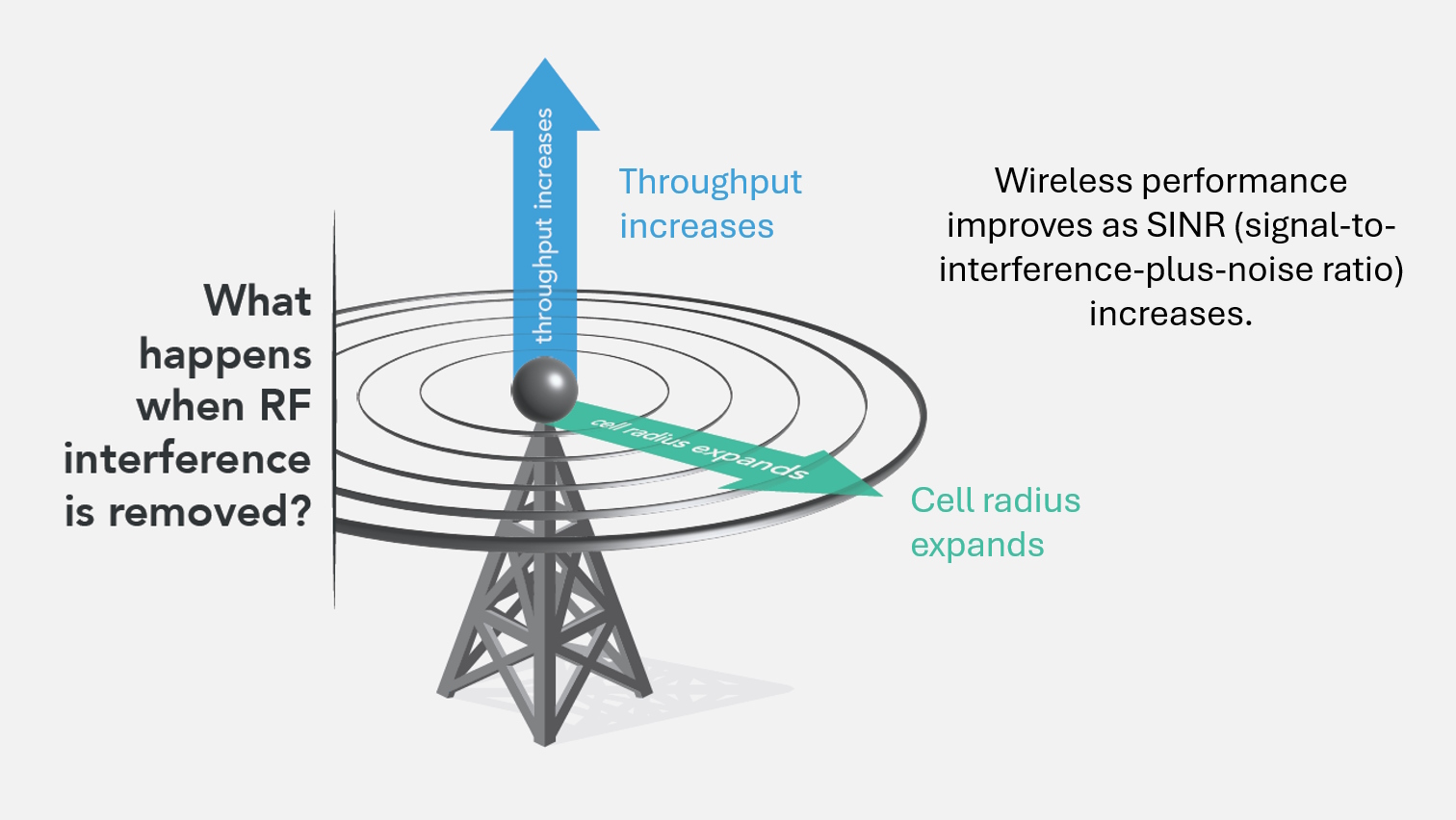MNO Radio Access Networks
Mobile Network Operators can’t afford to lose any coverage, drop subscribers, or deliver less data at lower speeds. ISCO’s solutions sit between the radio and the baseband unit / DU, removing interference and PIM to deliver more capacity and better coverage for MNO radio access networks used by billions of subscribers.
Sources of external interference
Listed below are some common interference scenarios experienced by Mobile Network Operators:
Passive InterModulation (PIM) - When certain frequency bands are used in combination, PIM can occur. Cluttered rooftops and cell towers without good PIM hygiene are more susceptible to PIM interference.
Tropospheric Ducting - Some weather conditions create a conductive channel in the air for wireless signals, allowing them to propagate hundreds of miles (well beyond their intended range). These remote signals may come from TV broadcast towers or cellular networks, and they interfere with MNO radio access networks. Generally tropospheric ducting is seasonal and correlates with seasonal weather patterns.
Jammers - Radio frequency jammers can easily be bought from many sources online even though they are illegal except in certain circumstances. They are used to block communication, typically for a specific purpose such as prohibiting phone calls from a prison building or preventing normal operation of devices like drones or security cameras. Although jammer targets are usually individual buildings or small geographic areas, they can also take down the public wireless networks in surrounding areas when in use.
Cross-border interferers - Cell sites close to national borders are susceptible to noise and interference from neighboring countries. Because operators and regulators have no jurisdiction in other countries, issue resolution can be a lengthy process or may not even be possible.
Unshielded electrical equipment and leaky cables - This includes neon signs, electrical motors, power supplies, CATV, and all manner of commercial and industrial equipment. While they are not designed to radiate RF signals, a malfunctioning unit can radiate at low-band frequencies and interfere with network operations.
How ISCO helps wireless networks
ISCO's solutions automatically detect interference and apply a set of algorithms that optimally reduce or cancel that interference. This translates into network KPIs that affect network quality, performance, and cost:
Speed
for applications to work properly
Accessibility
to connect and serve more subscribers
Coverage
to reduce cost as cell sites carry more traffic
